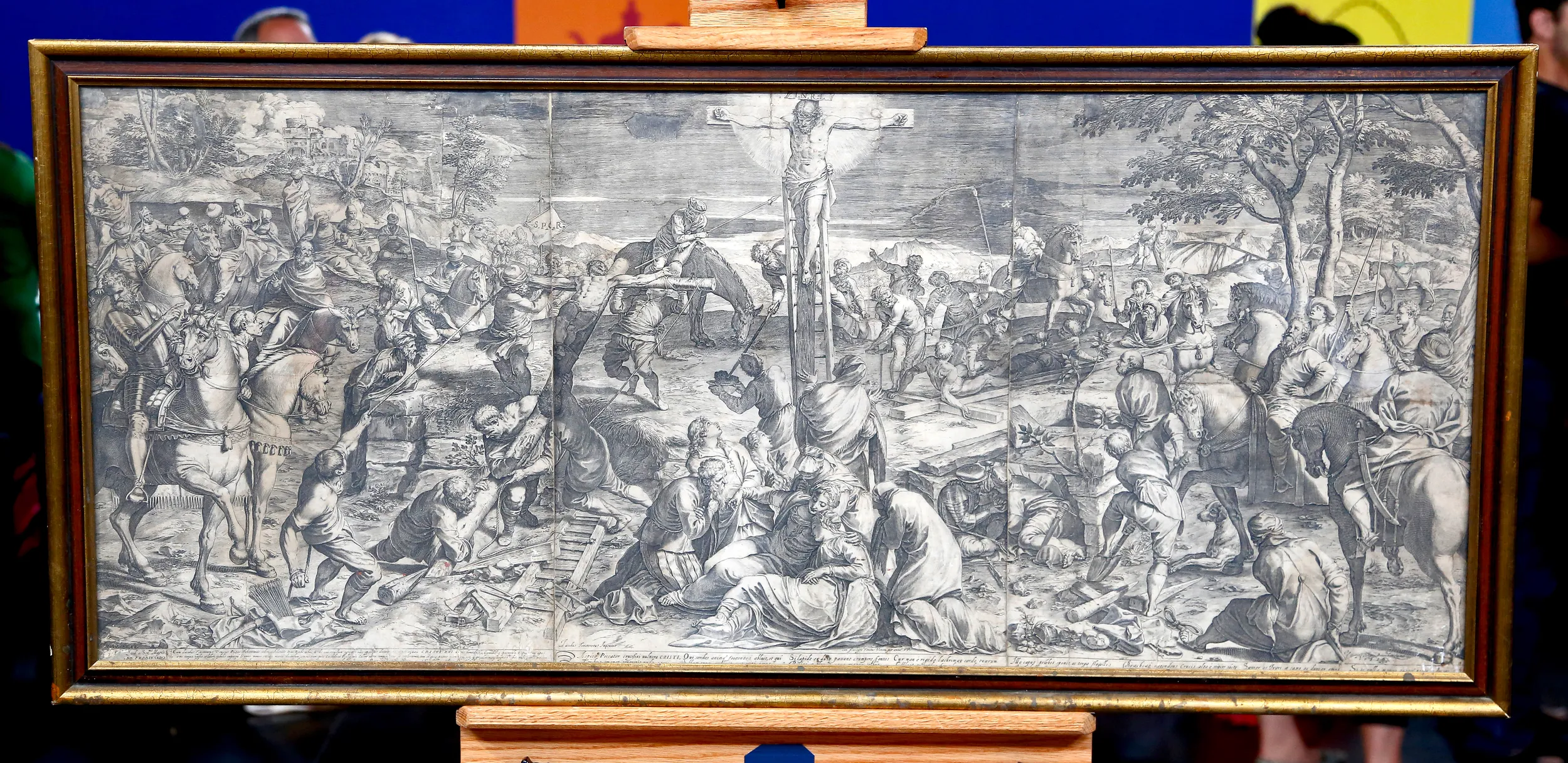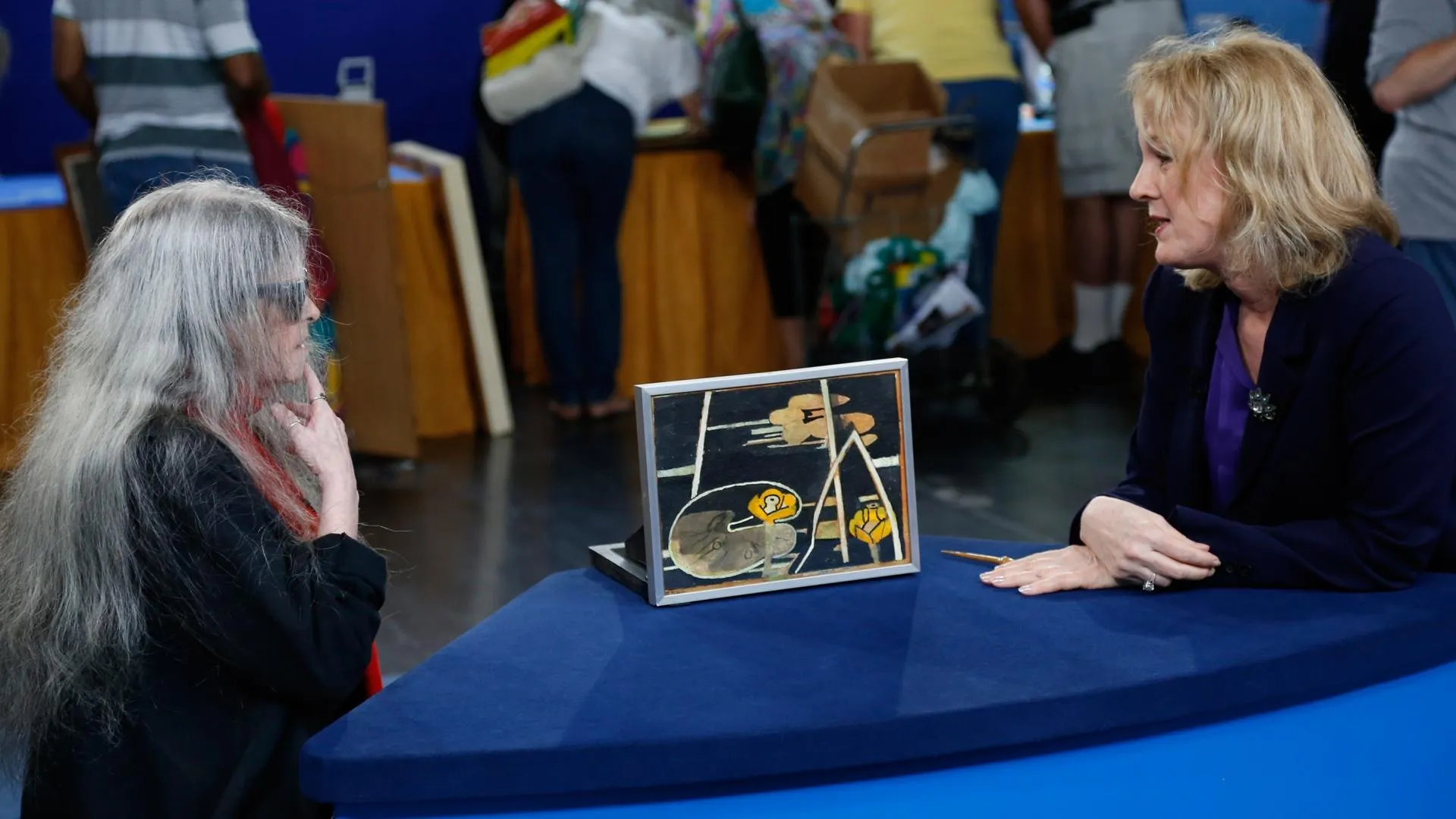GUEST: My grandfather was a big collector of all kinds of interesting things, and he'd go to auctions and occasionally he'd buy more than just antique armor and guns, so he actually got a painting. And a big storm happened and the painting fell off the wall, and this was actually behind it.
APPRAISER: Whoa, interesting. And what do you think of it?
GUEST: I don't know what to think of it, to be quite honest. I don't know if it's real, fake. I don't know if it's an etching, an engraving. I mean, that's why I brought it to you here, and... just to find out more.
APPRAISER: And have you ever had it looked at before, or valued? I mean, it doesn't sound like it, because it was hidden behind a painting.
GUEST: Yeah, never. Actually, it sat on my mother's wall for years, and she didn't want it anymore and gave it to me about a year ago, and I've had it sitting behind a couch in my office.
APPRAISER: It is an engraving. It's by Agostino Carracci after a painting by Tintoretto. And it was printed and made in 1589. And some of that is described on the engraving itself. Down here in this inscription, you can see Carracci's name. Closer to the center here is Tintoretto's name. And then all the way over here close to me is the date "1589." And all the text below that down here describes what is going on in this scene, which is obviously the crucifixion of Christ. And it's an engraving printed from three different copper plates on three different sheets of paper. That's why you have these breaks in the paper. Those are natural. It's one of the largest prints that survived from the 1500s. And the fact that it survived more or less intact since 1589 is pretty remarkable, too. Now, it's well documented that Carracci, who was a pretty famous print maker from Bologna and worked in the late 1500s, was traveling to Venice back and forth in the 1580s making engravings after Venetian artists, in particular Tintoretto. This is a well-documented engraving. Even in its time, it was considered sort of a famous image, that he had made something so large and reproduced the great theatrical nature of Tintoretto's painting, which is quite a bit larger than this. You have right front and center here Christ crucified, the Virgin Mary and Mary Magdalene. You have these two figures here. He's dipping the sponge into vinegar, which is about to be given to Christ. And a great number of onlookers. It's like a huge opera set. It's really pretty dramatic and very typical for its age. I'd say it's survived more or less intact. There's some staining here, which is fairly minor. Probably your biggest issues are these losses, which have just been covered with paper and inked in. All that being said, it's something that, with a good paper restorer, could be cleaned and reversed. Perhaps a half a dozen of these have come to auction in the last 50 years. It's that scarce, you just don't see it. In this condition, you would probably see it at auction for around $4,000 to $6,000. Cleaned up, and that cleaning would cost maybe $500 to $600, this could potentially bring between $10,000 and $15,000 at auction.
GUEST: Wow, that's great.





